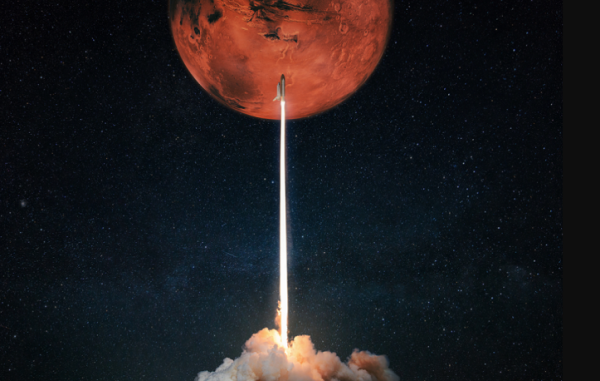
- A study by energy company, Brilliant Light Power, predicts that a trip to Mars would take only one day using their TPV Sun Cells to power an on-board laser.
- People could travel to Mars as tourists, as well as throughout the solar system, in a mere matter of days and weeks.
- The research prediction has been verified by Dr. Randell Mills: a highly qualified scientist, inventor of the Sun Cell, and CEO of Brilliant Light Power.
Brilliant Light Power has conducted research which could change the way space travel is viewed. Dr. Randell Mills, CEO of the New Jersey-based energy company, has confirmed that by using laser-hydrogen propulsion (or laser-thermal propulsion), people could travel outer space to Mars in just a day. Sit back, relax, and watch in-flight movies as on a present-day long-haul flight between Sydney and London. This would be possible through the use of TPV Sun Cells, to power an on-board laser. The laser would fire continuously, increasing hydrogen propellant to higher temperatures than 10,000°K, as compared to an Earth-based laser, which can fire for just 58 minutes.
The research found that a trip to Mars would take just one day at 2G acceleration and deceleration using the TPV Sun Cells developed by Brilliant Light Power to power an on-board laser. The idea is to utilize hydrogen and heat it to a very high temperature as a propellant, employing a laser to heat the element, thus driving the spacecraft forward in a similar way that steam is heated from a steam kettle.
The method reported on in the media, however, based on research led by McGill graduate and current MSc Aerospace Engineering student at TU Delft, Emmanuel Duplay, states that a journey to Mars would take 45 days. This research was in collaboration with Associate Professor Andrew Higgins, as well as other researchers with the Department of Mechanical Engineering at McGill University. The study, titled, ‘Design of a rapid transit to Mars mission using laser-thermal propulsion’ was recently submitted to the journal ‘Astronomy & Astronomy’.
This study states:
“A recent NASA solicitation seeking revolutionary propulsion for rapid, deep-space transit identified a number of candidate missions of interest: traversing the distance between Earth orbit and Mars orbit in no more than 45 days, traversing a distance of 5 AU in no more than one year, traversing a distance of 40 AU in no more than 5 years, and traversing a distance of 125 AU in no more than 10 years …”
The main difference between the study by McGill, and Dr. Randell Mills’ research into providing transit to Mars in a day, is that the McGill method uses a ground-based laser array. Comparatively, the Mills method would be able to provide an on-board ship-based laser running on tiny quantities of water as fuel. A ground-based laser array only heats the fuel for 58 minutes, whereas an on-board laser would not have such limitations. Brilliant Light Power can supply the needed energy at an extremely high-power density.
By using this method of laser-hydrogen, or laser-thermal, propulsion (laser-thermal) and current technology, you could theoretically, practically, and technologically feasibly travel to Mars in just one day, by using an on-board laser, as well as sufficient fuel. This method would make it possible to send fifty astronauts or passengers to Mars, in a 100-ton spacecraft with a 6% payload – in just a day.
There would be little food and drink required for the trip, and due to the short duration of the trip, there would also be low radiation exposure. At 2G acceleration and deceleration en-route to Mars and back, one would weigh twice as much on-board the spaceship as on Earth, but activities on the ship would require little exertion.
Hypothetically, this method means the entire Solar System can be explored in a mere matter of days and weeks; even if no more fuel was used and a period of weightlessness had to be endured on the spacecraft, as the speed of the spaceship would not decrease by very much.
Brilliant Light Power’s TPV Sun Cells
Brilliant Light Power could produce 60 million Sun Cells in just one year – enough to replace all power generation world-wide! They have recently produced a proven 1.14-megawatt TPV Sun Cell.
Read more about Brilliant Light Power and Dr. Randell Mills’ developments here: http://www.elizabethjane.org/mars.html
Media Contact
Company Name: ElizabethJaneDotOrg
Contact Person: Elizabeth Eodelyn Jane
Email: Send Email
Phone: (+61)438842564
City: Queenstown
State: Tasmania
Country: Australia
Website: www.elizabethjane.org
